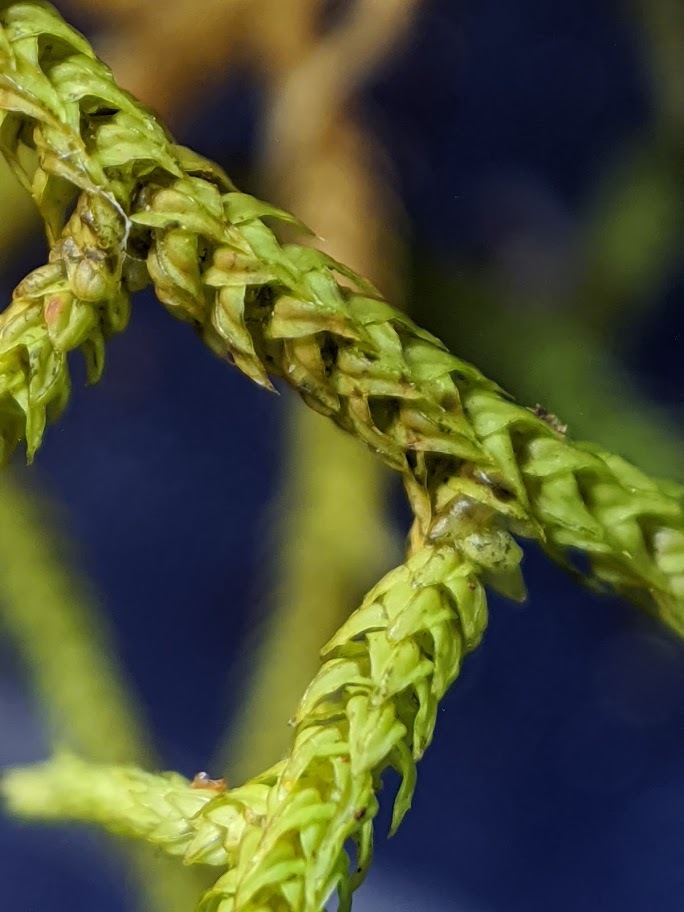Papillaria
Dioicous. Asexual reproduction by flagelliform branches and caducous leaves. Wefts or pendents on trees or rarerly rocks. Primary and secondary stems clearly differentiated; primary stem creeping or pendent; secondary stems pendent, pinnate to irregularly branched; branches attenuate or with flagellate apical portions. Leaves imbricate, erect-spreading to spreading when moist, appressed to erect-spreading when dry; base cordate to auriculate; apex acute, acuminate or apiculate; costa simple, extending 1/3–4/5 leaf length; margins denticulate or dentate near base, or entire throughout, with or without a border; laminal cells varying in shape and size across leaf, mostly pluripapillose, often obscured by papillae that are scattered or in a row over the lumen; laminal cells in apical half elliptic, oblong-rhomboidal, or linear; laminal cells near costa at base longer, rectangular or linear; laminal cells in auricles rhomboidal or linear-rhomboidal, with long axis of cells aligned parallel or perpendicular to margin; marginal cells smooth and more elongate or rounded, or papillose and similar in shape to laminal cells away from margin; alar cells poorly differentiated. Seta smooth. Calyptra cucullate, pilose. Capsules exserted, erect, symmetric. Operculum rostrate. Peristome double; exostome teeth 16; endostome segments alternating with teeth, papillose, perforate. Cilia rudimentary.
Nine species shared between Central America, the Caribbean, South America, tropical and southern Africa, Madagascar, India, Malesia, Taiwan, Australia and the southern Pacific (de Oliveira et al. 2020); four species in Victoria.
Papillaria forms a single lineage of mosses under a narrower circumscription of the genus that excludes the old type species P. nigrescens (Hedw.) Jaeger, that is now included in the closely related Meteorium Dozy & Molk (de Oliveira et al. 2020). Papillaria is now characterised by a combination of most cells having multiple papillae over the lamina, cordate or auriculate leaves lacking large serrations to the margin, exserted capsules, and branching or biseriate axillary hairs formed by rectangular brownish basal cells and slightly longer, ovate-roundish, hyaline distal cells (de Oliveira et al. 2020).
 Spinning
Spinningde Oliveira, J.R.P.M.; Quandt, D.; Newton, A.E.; Pôrto, K.C.; Luong, T.-T.; Huttunen, S. (2020). Systematic Revision of Papillaria (Meteoriaceae, Bryophyta). Systematic Botany 45(3): 411–438.
Streimann, H. (1992). Moss genus Papillaria (Meteoriaceae) in the Pacific. Journal of the Hattori Botanical Laboratory 71: 83–111.

